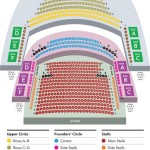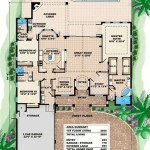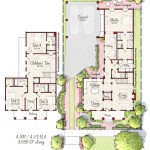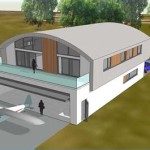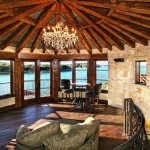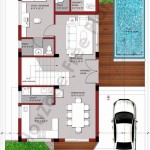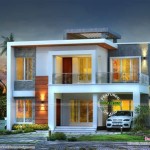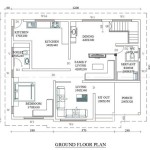One Bedroom House Plans 3D: Visualizing Your Compact Dream Home
One-bedroom house plans offer a compelling solution for individuals, couples, or those seeking a smaller footprint. Whether it's a starter home, a vacation retreat, or a downsizing option, the design process benefits significantly from the utilization of 3D modeling. These models provide a realistic and immersive preview, allowing potential homeowners to visualize the space and make informed decisions before construction begins.
3D representations of one-bedroom house plans go beyond simple floor plans. They offer a dynamic perspective, showcasing the layout, dimensions, and spatial relationships within the home. This visualization extends to crucial elements like window placement, natural light flow, and the interplay between various rooms. This level of detail enables a comprehensive understanding of the design, fostering confident decision-making during the planning phase.
The advantages of using 3D models extend beyond just visualizing the layout. They facilitate better communication between clients, architects, and builders. A 3D model serves as a common reference point, minimizing misunderstandings and ensuring everyone is on the same page. This clarity streamlines the construction process, potentially reducing errors and costly revisions down the line.
Exploring various design options is simplified with 3D modeling. Different layouts, furniture arrangements, and even wall colors can be easily tested and visualized within the model. This virtual experimentation allows for informed choices and greater control over the final outcome, ensuring the design perfectly aligns with the homeowner's vision and lifestyle.
For individuals considering a one-bedroom house, the compact nature requires careful space planning. 3D models excel in this area, offering the ability to optimize every square foot. By visualizing furniture placement and traffic flow within the model, potential issues can be identified and addressed early on, resulting in a more functional and comfortable living space.
One-bedroom house plans often incorporate open-concept designs to maximize the sense of space. 3D models effectively demonstrate how these open layouts will function in reality. They show how the living, dining, and kitchen areas interact, helping homeowners visualize the overall flow and determine if adjustments are needed to better suit their lifestyle.
Exterior visualizations offered by 3D models are equally important. They provide a realistic depiction of the house's exterior appearance, including rooflines, siding, and landscaping. This allows homeowners to experiment with different exterior design options and achieve the desired curb appeal. This visualization is invaluable in ensuring the final product harmonizes with the surrounding environment.
The integration of landscaping within the 3D model extends the visualization beyond the house itself. By incorporating elements like trees, shrubs, and pathways, homeowners can gain a comprehensive understanding of how the outdoor spaces will interact with the house. This holistic view aids in creating a cohesive and aesthetically pleasing design that maximizes the entire property.
Cost estimation is another area where 3D models prove beneficial. By providing accurate measurements and material quantities, these models contribute to more precise cost projections. This transparency helps homeowners stay within budget and avoid unexpected expenses during the construction process.
Accessibility features are crucial in any home design. 3D models allow for the visualization and integration of these features, ensuring the house meets specific accessibility requirements. This includes considerations for wheelchair accessibility, grab bars, and other modifications that promote safe and comfortable living for individuals with mobility challenges. This level of detail in the planning phase contributes to creating inclusive and universally designed spaces.
Sustainability is an increasingly important factor in modern home design. 3D models can be used to analyze a design's energy efficiency by simulating factors like sunlight exposure and airflow. This information can inform decisions about window placement, insulation, and other energy-saving measures, leading to a more environmentally friendly and cost-effective home.
Virtual reality (VR) technology is further enhancing the 3D modeling experience. By immersing themselves in a VR environment, homeowners can "walk through" their future one-bedroom home, gaining a truly realistic sense of scale and spatial relationships. This immersive experience allows for a deeper understanding of the design and facilitates more informed decision-making.
When choosing a software or service for 3D modeling, consider factors like ease of use, rendering quality, and compatibility with other design software. Selecting the right tools ensures a smooth and efficient design process, maximizing the benefits of 3D visualization for your one-bedroom house plan.
The use of 3D models for one-bedroom house plans represents a significant advancement in residential design. By providing a dynamic and interactive representation of the space, these models empower homeowners to make informed decisions, optimize their living space, and ultimately create a home that perfectly reflects their vision and lifestyle.

1bedroom 1bath 3d Floor Plan One Bedroom House Plans Apartment Design Layout

Cute Pad 2 Small House Floor Plans Apartment One Bedroom

Modern One Bedroom 3d Floor Plans Tsymbals Design

Modern One Bedroom 3d Floor Plans Tsymbals Design

One Bedroom House Plans 6 By 5 M 3d Model Rvt Dxf Dwg Free3d

1 Bedroom Apartment House Plans

1 Bedroom House Plan Examples

Modern One Bedroom 3d Floor Plans Tsymbals Design

One Bedroom House Apartment Floor Plans 3d

1 Bedroom Tiny House Plan

